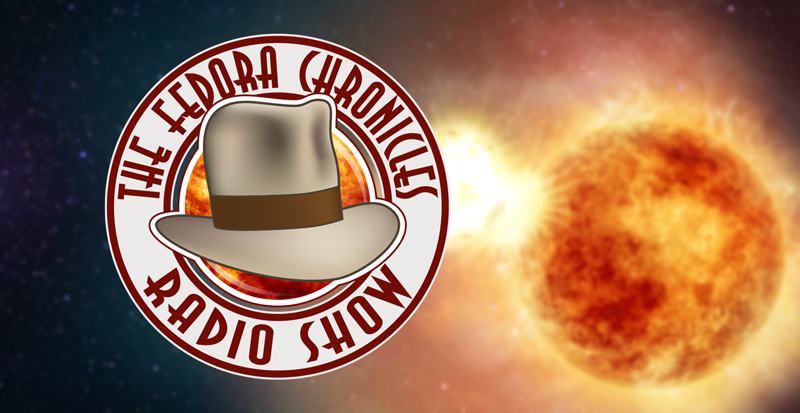
Astrophysicists Know What They Don't Know!
Jason Cousineau, Superfan Melissa From Missouri, and Eric Fisk | December 19th, 2020
Jason Cousineau, Eric Fisk, and Superfan Melissa From Missouri discuss the latest SPACE news; More Mysterious Radio Signals from beyond, "Organic" is literally EVERYWHERE in the universe, and a mega-superstar simply disappears.
And no... we're not talking about Brendan Fraser from "The Mummy!"
But first, a weird question about Larry King's marital status and if he's still alive, and avoiding the commercialization of The Fedora Chronicles!
Subscribe to The Fedora Chronicles Stitcher, Spotify, Overcast, SoundCloud, iTunes, and PlayerFM
Show Notes and Links
“When we actually opened it, I was speechless. It was more than we expected and there was so much that I was truly impressed,” said the Jaxa scientist Hirotaka Sawada. “It wasn’t fine particles like powder, but there were plenty of samples that measured several millimetres across.”
SCIENTIST LEFT “SPEECHLESS” AFTER OPENING ASTEROID SAMPLES

Image courtesy NASA
Scicne Tech Daily: Hubble Discovers a Strange Exoplanet That Resembles the Long-Sought “Planet Nine”
The 11-Jupiter-mass exoplanet called HD106906 b occupies an unlikely orbit around a double star 336 light-years away and it may be offering clues to something that might be much closer to home: a hypothesized distant member of our Solar System dubbed “Planet Nine.” This is the first time that astronomers have been able to measure the motion of a massive Jupiter-like planet that is orbiting very far away from its host stars and visible debris disc.
The exoplanet HD106906 b was discovered in 2013 with the Magellan Telescopes at the Las Campanas Observatory in Chile’s Atacama Desert. However, astronomers did not then know anything about the planet’s orbit. This required something only the Hubble Space Telescope could do: collect very accurate measurements of the vagabond’s motion over 14 years with extraordinary precision.
LiveScience: "A 'monster' star 2 million times brighter than the sun disappears without a trace," By Brandon Specktor.
The star's mysterious disappearance could hint at a new type of stellar death.
In 2019, scientists witnessed a massive star 2.5 million times brighter than the sun disappear without a trace.
Now, in a new paper published today (June 30) in the journal Monthly Notices of the Royal Astronomical Society, a team of space detectives (see: astrophysicists) attempt to solve the case of the disappearing star by providing several possible explanations. Of these, one twist ending stands out: Perhaps, the researchers wrote, the massive star died and collapsed into a black hole without undergoing a supernova explosion first — a truly "unprecedented" act of stellar suicide.
"We may have detected one of the most massive stars of the local universe going gently into the night," Jose Groh, an astronomer at Trinity College Dublin and a co-author of a new paper on the star, said in a statement.
You can support the show by visiting our Zazzle page - exactly 12.5 percent of every purchase goes to keeping this and other shows on The Fedora Chronicles Network on the air. Coming soon we will have our new line of “Modern Fashion Is Evil” line of shirts, coffee mugs, and other swag.
Or, become a Patreon – click the Patreon link and for a mere dollar a month you’ll get early access to the podcasts, updates on what we’re working on, and so much more. Thanks for all your support in advance, and thank you to our listeners who have already contributed. With that said – Thanks for listening, enjoy the show!







